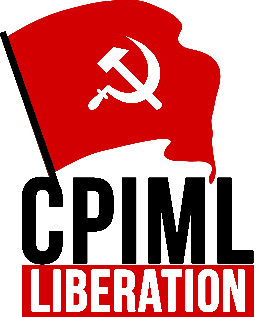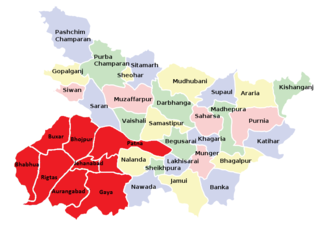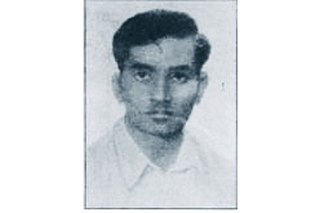Related Research Articles

The Communist Party of India (Marxist–Leninist) Liberation is a communist political party in India. The party is represented in Bihar and Jharkhand Legislative Assemblies. Since 2023, the party is also a member of the INDIA electoral alliance. In Bihar, the party has significant base amongst the Extremely Backward Castes and the Schedule Castes. It was successful in mobilising Upper Backward Caste groups such as Koeris in some districts of central Bihar, prior to the rise of Lalu Prasad Yadav. The party faced existential crisis when a large section of its Koeri and Yadav support base was defected to Rashtriya Janata Dal in 1990s. However, the ideological commitment of its cadre protected it from disintegration. It staged a comeback in politics after winning twelve seats in Bihar Legislative Assembly in 2020 and by sending two of its members to Lok Sabha in 2024 Indian general elections.
A private army is a militia or paramilitary force consisting of armed combatants who owe their allegiance to a private person, group, or organization, rather than a nation or state.

The Ranvir Sena is a militia functioning as a landlord group, mainly based in the state of Bihar, India. The group was formed by Bhumihar landlords in 1994, with the aim to counter the influence of various left-wing militants, Naxalite groups and the Communist Party of India (Marxist–Leninist) Liberation (CPI-ML) in central Bihar. The Ranvir Sena has been connected to a number of massacres including the massacre at Laxmanpur Bathe. It has, on several occasions, been accused of human rights abuses. The Bihar state government banned the Ranvir Sena in July 1995, but the group continue to remain active. The group has frequently publicly claimed responsibility for its crimes with impunity.
Kushwaha is a community of the Indo-Gangetic Plain that has traditionally been involved in agriculture, including beekeeping. The term has been used to represent different sub-castes of the Kachhis, Kachhvahas, Koeris and Muraos. Under the Indian government's system of positive discrimination, the Kushwahas are classified as a "Backward" or Other backward class. The Kushwaha had worshipped Shiva and Shakta, but beginning in the 20th century, they claim descent from the Suryavansh (Solar) dynasty via Kusha, one of the twin sons of Rama and Sita. At present, it is a broad community formed by coming together of several caste groups with similar occupational backgrounds and socio-economic status, who, over the time, started inter-marrying among themselves and created all India caste network for caste solidarity. The communities which merged into this caste cluster includes Kachhi, Kachhwaha, Kushwaha, Mali, Marrar, Saini, Sonkar, Murai, Shakya, Maurya, Koeri and Panara.
Bhumihar, also locally called Bhuinhar and Babhan, is a Hindu caste mainly found in Bihar, the Purvanchal region of Uttar Pradesh, Jharkhand, the Bundelkhand region of Madhya Pradesh, and Nepal.
The politics of Bihar, an eastern state of India, is dominated by regional political parties. As of 2021, the main political groups are Rashtriya Janata Dal (RJD), Bharatiya Janata Party (BJP), Janata Dal (United) (JDU), Indian National Congress (INC), Left Front, Lok Janshakti Party (LJP), Hindustani Awam Morcha (HAM). There are also some smaller regional parties, including Samata Party, Hindustani Awam Morcha, Rashtriya Jan Jan Party, Rashtriya Lok Janata Dal, Jan Adhikar Party and Vikassheel Insaan Party, Lok Janshakti Party and Rashtriya Lok Janshakti Party, which play a vital role in politics of state. As of 2024, Bihar is currently ruled by NDA, after JDU break out from Mahagatbandhan (Grandalliance) coalition and returned to NDA fold.
The Central Organising Committee, Communist Party of India (Marxist–Leninist) Party Unity, more commonly known as CPI(ML) Party Unity or simply 'Party Unity', was a communist party in India 1982-1998. Narayan Sanyal alias Naveen Prasad was the general secretary of the party. Party Unity was the official organ of the party. CPI(ML) Party Unity was one of the predecessors of the Communist Party of India (Maoist).
The Koeri, also referred to as Kushwaha and more recently self-described as Maurya in several parts of northern India are an Indian non-elite caste, found largely in Bihar and Uttar Pradesh, whose traditional occupation was agriculture. According to Arvind Narayan Das they were horticulturists rather than agriculturists. They are also recorded as performing the work of Mahajan in credit market of rural parts of Bihar and Bengal in 1880s. Koeris have attempted Sanskritisation— as part of social resurgence. During the British rule in India, Koeris were described as "agriculturalists" along with Kurmis and other cultivating castes. They are described as a dominant caste in various opinions.
Bara massacre was a caste based carnage that took place in 1992 in Bihar. At midnight on 12–13 February 1992, the Maoist Communist Centre of India killed 40 Bhumihars at Bara Village in Gaya district of Bihar, India. The MCC's armed group brought the 35 men of Bara village to the bank of a nearby canal, tied their hands and slit their throats. As many as 36 people were accused of the crime, but charges were framed against only 13. The police failed to arrest the others, who had defied their summons.

Lal Sena was an organised armed militia of CPIML Liberation in northeastern India, across the terrains of central Bihar, north-west of today's Jharkhand, and a few districts of eastern Uttar Pradesh. It was formed mainly by lower caste peasantry and landless labourers.
Bhumi Sena was a private army which operated in the Patna, Nalanda, Jehanabad, and Gaya districts of Bihar, India in the 1980s, made up of members of the Kurmi caste.
The Kuer Sena was a caste-based private army operating in the Indian state of Bihar during the 1970s and 1980s. The majority of its members were young men from the Rajputs, and the militia was named after the 19th century anti-colonial revolutionary, Kunwar Singh, who is considered be a community hero by the Rajputs of Bihar.

Jagdish Mahto was an Indian communist activist. He was a naxal leader who led the 1970 Bhojpur uprising in the landlord-dominated Bhojpur region of Bihar. He was a member of the Communist Party of India (Marxist–Leninist), an organisation which was leading the Naxalite insurgency in Bihar. He also fought against the upper-caste landlords for the cause of lower-caste people. Mahto, also called Master Saheb, was a member of the Bihar State Committee of CPI(M–L) and one of the founding leaders of the party in Bhojpur.
The Afsar massacre was a mass shooting and mass stabbing that killed 12 people in the Indian village of Afsar, in 2000. The massacre was the result of caste wars of Bihar, which originate from clashes between upper-caste, who were supporters of the existing status quo, and the lower castes, who wanted to change the current system. According to the data by the "South Asia terrorism portal", the victims of these caste wars were most often Dalits, followed by Forward Castes, while Upper Backwards were victims less frequently than any other group.
The Backward Caste movement in Bihar can be traced back to the formation of Triveni Sangh, a caste coalition and political party, in the 1930s, which was revived after the introduction of land reforms in the 1950s aimed at removing intermediaries from agrarian society. But, this drive could not succeed in bringing long-lasting changes in the condition of lower strata of society, as they lacked political representation and economic power. The period since land reform included caste conflicts and the class struggle which eventually led to a transfer of absolute political power in the hands of Backward Castes, who had been kept away from it earlier. The class struggle succeeded the struggle of some of the Upper Backward Castes against the sacerdotal authorities for improvement in their ritual status. By the 1990s, the conflict between upper-castes and the lower-castes continued, with nearly 17 massacres taking place during this time period. But with the advent of politics of social justice and the Janata Dal in the 1990s, the lower caste became more active politically.
Krishnaut or Kishnaut Ahir also known as Vrishnis is a clan of the Yadav (Ahir) caste found in Bihar, Jharkhand and Nepal. The term Krishnaut which to them denotes their descent from Lord Krishna. They belongs to clan of Vrishni to which Vasudeva belongs.
Yadavs in Bihar refers to the people of Yadav community of the Indian state of Bihar. They are also known as Ahir, Gope, etc. The Yadavs form nearly 14.26 % of the state's population and are included in the Other Backward Class category in the Bihar state of India. Ahirs are among the land owning caste in the plains of Bihar.
Bhojpur uprising refers to the class conflict manifested in armed uprising of the 1970s, that took place in the various villages of the Bhojpur district of Bihar. These clashes were part of the Naxalite-Maoist insurgency in the state, which mobilised the agricultural labourers and the poor peasants against the landlords, primarily belonging to upper-castes. A distinguished feature of these insurgencies were their confinement to the villages, and the nine towns of the Bhojpur district remained unaffected from the periodic skirmishes between the armed groups. One of the reason sought for this peculiar feature is the absence of modern industries in the district. The economy of the district was primarily agrarian, and the industrial proletariat class was absent.

Dalits in Bihar are a social group composed of many Scheduled Castes, placed at the bottom of the "caste-based social order". The Dalits also include some of the erstwhile untouchable castes, who suffered various forms of oppression in the feudal-agrarian society of Bihar. Some of the Dalit castes have specific cultural practices, which differ from those of orthodox Hinduism.
References
- ↑ Human Rights Watch Asia; Smita Narula (1999). Broken People: Caste Violence Against India's "untouchables". Human Rights Watch. p. 48. ISBN 1564322289 . Retrieved 4 January 2021.
- ↑ Susan Bayly (2001). Caste, Society and Politics in India from the Eighteenth Century to the Modern Age. Cambridge University Press. pp. 346–347. ISBN 0521798426 . Retrieved 4 January 2021.
- 1 2 3 4 5 6 7 8 9 Kumar, Ashwani (2008). Community Warriors: State, Peasants and Caste Armies in Bihar. Anthem Press. pp. 108–112. ISBN 978-1-84331-709-8 . Retrieved 4 January 2021.
- ↑ Bindeshwar Pathak (1992). Action Sociology and Development. Concept Publishing Company. pp. 55–59. ISBN 8170223199 . Retrieved 4 January 2021.
- ↑ Ahmed, Farzand. "Violence rocks south-central Bihar as landlords rage war against retaliating serfs". India Today . Archived from the original on 1 July 2022. Retrieved 4 January 2021.